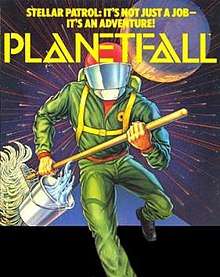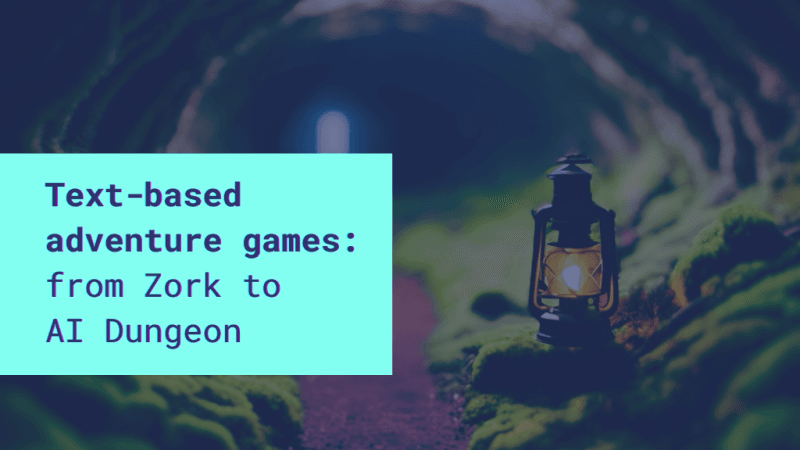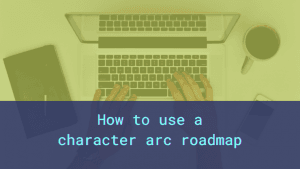The command prompt blinked expectantly. My fingers hovered over the keyboard, heart racing. “Look around,” I typed tentatively. The screen flickered, and text appeared, revealing a dimly lit underground chamber with moss-covered stone walls. A brass lantern sat nearby, casting soft shadows. “Take lantern,” I entered, and suddenly, I wasn’t just reading about an adventure—I was experiencing it.
In the world of text-based adventure games, simple text transforms story ideas into entire universes–immersive puzzles where every typed command or mouse click triggers a consequence.
Long before flashy graphics took center stage, people were discovering the intricate worlds that can emerge from a combination of carefully crafted sentences and human imagination.
In today’s post, I’ll take you on a brief tour of the history and evolution of text adventure games. I’ll even highlight a few classics and how you can play them!
Table of Contents
- The origins of text-based adventure games
- The digital renaissance: modern text adventures?
- Text adventures still matter
- Frequently Asked Questions
- What’s the deal with the magic word “xyzzy”?
- What are “feelies” in classic text adventure games?
- Are new text adventure games still being made?
- What programming languages powered the classic adventures?
- How does AI Dungeon create its narratives?
- Did Douglas Adams have any involvement in the making of the Hitchhiker's Guide game?
- Text adventure game terms explained
The origins of text-based adventure games
Back in the late ’70s, a whole new way to experience stories was born: digital text adventures.
Unlike the paper gamebooks that came before, these computer games were less linear and were capable of responding to players’ actions.
Zork, released in 1977 and celebrated as one of the first and most influential text adventure games, set the standard. Created by a group of MIT students, it swept players off their feet with its interactive puzzles and richly detailed environments, all navigated entirely by typed commands.
Infocom emerged a few years later. Founded by students and staff at MIT, the company cranked up the magic with beloved titles like Planetfall and The Hitchhiker’s Guide to the Galaxy.

Indeed, Infocom churned out over 35 titles between 1979 and 1989–many of which sold hundreds of thousands of copies–effectively ushering in what many consider to be the “golden age” of text adventures.
When newfangled graphical games began to steal the spotlight in the late ’80s and early ’90s, the mainstream buzz around text-based adventures took a backseat.
But for many people, myself included, the allure of text games never faded.
Technical innovation in text-based adventures
One of the unique aspects of these early text adventures was their clever use of parsers–special lines of code that worked behind the scenes to make the magic happen.
The role of the parser was to take the player’s quirky, sometimes offbeat commands — even ones as elaborate as “TAKE THE RED BOOK FROM THE SHELF AND PUT IT IN THE LEATHER BAG” — and translate them into actions that could drive the narrative forward.
(In later video games, the same actions would be handled via point-n-click with a mouse or by using buttons on a controller, but back then text was king.)
In effect, the parser was the bridge between the player’s intent and the evolving story, enabling them to co-create the adventure with every choice they made.
It might sound awfully simple, but it was this innovation that allowed early developers to build intricate puzzles and interactive worlds–all from nothing more than text.
The digital renaissance: modern text adventures?
Although less mainstream today, text-based adventures certainly never died out. Rather, they persisted and evolved over time.
This might surprise you, but new games and platforms are released every year, whether as part of the annual Interactive Fiction Competition (IFComp), just for fun/as a hobby, or driven by the entrepreneurial spirit.
In fact, anyone with a story to tell can step into the role of game designer.
Open-source tools have not only expanded the creative potential of text adventures but have also made them more accessible.
And thanks to expired patents, many of the old classics can now be emulated in your browser–similar to checking out a book at the library.

The expansion and evolution of interactive storytelling
As I mentioned above, text games didn’t die out but evolved over time. Here are some of the ways you can experience interactive, written adventures today (in order of initial appearance):
- MUDs (Multi-User Dungeons) (circa 1978): While students at MIT were creating the single-player adventure Zork, students at the University of Essex were experimenting with early multiplayer text games. MUDs laid the groundwork for communal adventuring and eventually gave rise to MMOs.
- Hypertext narrative games (circa 2009): What if you could write and play a gamebook in your browser? Enter Twine, a tool that makes it easy for anyone to create their own CYOA games without needing a coding degree. Stories can be short and playable in just a few minutes… or can be made up of hundreds of thousands of words, lasting for hours of gameplay.
- Collaborative storytelling games (circa 2017): With platforms like Storium (launched in 2017), creative writing became even more of a co-op activity. Storium blends traditional narrative structures with player-driven co-creation. It works well in educational settings and can be used as a tool to help writers build confidence in their writing.
- AI-driven experiences (circa 2019): And then came AI Dungeon. With advanced machine learning and a few simple prompts, this platform can create dynamic narratives on the fly. Players aren’t just playing the games, they’re collaboratively writing a living story with help from AI. (Which may or may not be a good thing, depending on your opinions of AI.)
If the idea of multi-user dungeons intrigues you, I recommend taking a peek at my MUD Resources page. In the future, I’d like to put something similar together for interactive fiction, as well.
The persistent appeal of text
One thing that makes text-based adventure games so enduring is their remarkable ability to transform a simple phrase like “A dark, damp cave stretches before you” into a vivid, first-person experience.
There’s a kind of magic in the way a few well-chosen words invite your imagination to fill in the details. This interplay between writer and player–the ultimate form of narrative co-authorship–is why these games never really go out of style. There’s just nothing else quite like them.
Beyond the storytelling, these games can also be a real workout for your brain! They often demand that you think critically, parse nuanced language, and make strategic decisions based solely on text. Give Zork a try, and you’ll see what I mean. 😂
And lastly, let’s not forget about accessibility: text-based games offer rich narrative experiences without the need for complex visuals or expensive graphics cards.
For example:
- Screen reader-friendly interfaces
- Customizable text sizes and contrasts
- Low computational requirements
Though, it should be noted that these perks don’t come with all text games. Creators need to make accessibility a priority if they want to be inclusive of players with visual disabilities.
You can find several examples of accessible multiplayer games here on Writing Games, as well as interviews with creators on how they made their games easier to play.
Text adventures still matter
Text adventures aren’t just relics of gaming history–they’re living narratives that continue to captivate us decades later.
They prove that, often, the most sophisticated graphics engine is the human mind.
And sometimes, the most epic adventures begin with but a word.
From those early works created in university computer labs to today’s cutting-edge AI-driven platforms, text-based adventure games have continuously evolved, bridging the gap between classic storytelling and modern digital media.
They invite every one of us to step into a world limited only by our imagination.
Okay, our imagination aaaand maybe the capabilities of the parser… 😉
By the way, you can play the 30th Anniversary Edition of The Hitchhiker’s Guide to the Galaxy for free on the BBC’s website. This short article has some fun background info on its release.
Compare that edition to the original, playable on RetroGames.cz. Or if you’re more into sci-fi, check out Planetfall. I’d love to hear what you think!
Frequently Asked Questions
Here’s a bit of fun and interesting trivia about text adventure games for you:
Text adventure game terms explained
- Parser: The game’s linguistic engine that interprets and processes player commands. In classic text adventures, getting the phrasing just right was key. Later parsers could handle more complex input. I enjoyed this in-depth discussion of parsers and why they suck by IF pioneer Emily Short.
- Interactive fiction (IF): A broad term for text-based games where players interact with the narrative through typed commands (a la Zork) or hyperlinks (Twine games).
- CYOA (Choose Your Own Adventure): A style of narrative where players’ choices directly influence the story’s progression. In Twine games, for example, this is done via hyperlinks that take you between different parts of the story.
- MUD (Multi-User Dungeon): Early multiplayer games that allowed players to interact in persistent virtual worlds. These games eventually gave rise to MMOs.
- Room descriptions: Textual portrayals of game environments that set the scene, build atmosphere, and highlight potential interaction points.






Leave a Comment